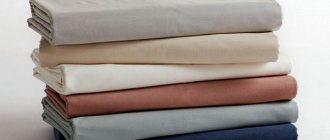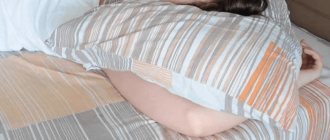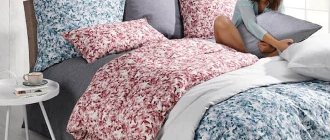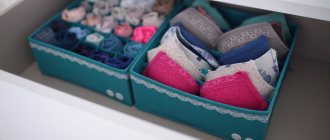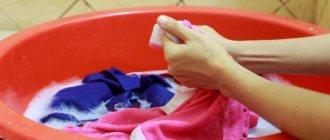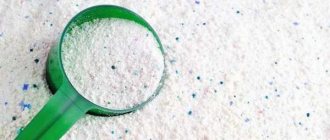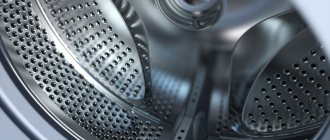The world of fabrics is diverse. Manufacturers offer a huge number of new types. But, for many centuries, there have been traditional and popular ones that will never go out of use. These include percale and satin. They are still relevant today, thanks to their qualities and positive characteristics.
Many, not knowing the qualities of matter, are lost when choosing. Which one is better and what are the differences? Even professional seamstresses find it difficult to understand these materials.
Percale or satin - which is better and why
Most often, bed linen is made from these fabrics. Percale is so dense and durable that it is used for sewing tents, flags, and sails for ships.
Seamstresses love to use percale for sewing bed linen and pillow covers. Due to its dense structure, the material does not allow feathers to escape from the pillowcase. It is comfortable to sleep on such linen. On hot days it cools the body, and on cold days it warms the body.
Satin is also woven from natural cotton. They use a complex weaving pattern. The result is a shiny and soft fabric. At the same time, the front side is glossy and the back side is matte. Bed linen is also made from satin.
Which one is better to choose from these fabrics? Depends on consumer preferences.
Conclusion
If you want to buy high-quality bedding, you will have to choose between the two most expensive and durable materials. Percale or satin – it’s not so easy to decide.
These are the most dense and wear-resistant materials. But due to the way it is created, percale can withstand five times as many washes. Satin is more attractive in appearance - because of its smoothness and shine, it resembles silk. At the same time, the cost of satin, although slightly, is higher than the cost of percale. But the latter is more difficult to care for.
However, the main criterion remains personal preference. After all, satin is a smooth and sliding material, while percale is rough and velvety.
What is the difference between satin and percale?
Both types of fabrics are made from high quality cotton. They are very durable. Retains colors well after washing. But there are still differences:
- In terms of strength, percale is the leader. Withstands a greater number of washes - up to a thousand; Therefore, it will last longer. Satin is much softer and thinner. Therefore, it loses its qualities faster. It can only withstand up to three hundred washes. It may lose color and fade.
- There are also differences in the texture of the fabric. Percale is soft, with a velvety surface. Satin is a shiny and smooth material;
- satin is more expensive;
- satin is similar to silk. The interior looks more rich and brilliant. Percale is matte and slightly duller.
Satin is an expensive pleasure
Satin linen is expensive. This is dense, high-quality cotton, its surface is smooth and shiny, visually practically indistinguishable from silk. But such external characteristics can be signs of the addition of elastane to the fibers, so you need to read the labels carefully.
Satin underwear is warmer than silk, does not electrify, practically does not wrinkle, lasts a long time, and is suitable for daily use. The fabric does not lose its performance qualities within 250–300 machine washes. Satin linen should be washed at 40–60 °C.
In the production of satin, long-fiber Egyptian cotton is usually used. The fabric is woven using the satin method, in which the weaving is exclusively double; on the front side, weft threads predominate, forming a diagonal scar. The density of satin is high - 115–130 g/m2. To make the fabric even stronger and hold the pigment better, it is treated with alkaline compounds in high concentrations.
Sometimes you can see underwear, oh. This is the most expensive version of cotton, the fibers of which do not contain the slightest additional inclusions.
When weaving satin, two threads are used: the main thread is thick, simple, and forms the wrong side, and shiny, thin, twisted, forms the front side. Thanks to this, the underside of satin linen turns out to be slightly rough, matte and, unlike silk products, does not slip off the bed.
Linen is made from bleached, plain-dyed, printed, that is, patterned, and jacquard, that is, embossed, satin. The latter is the most expensive, but less practical, wrinkles quickly, and requires ironing while wet from the inside out.
Satin. Properties and characteristics
Satin is a beautiful, durable cotton fabric. In ancient times, satin was a type of silk. Gradually, silk threads were removed from the composition. Due to high cost and scarcity. They were replaced with cotton ones. It was woven in China. Today, artificial fiber is also added to the composition of satin.
To increase strength and color fastness, during manufacturing, the threads are treated with acid and alkali. This process is called mercerization. The cost of the material increases. There are manufacturers who do not use mercerization. As a result, you get inexpensive satin. But it won't last long. The price corresponds to the quality.
It is used for sewing clothes, bedding, curtains, bedspreads. The positive properties are that the material does not deform after washing and ironing. Does not lose color brightness. Not an allergen. Therefore, it can be used for sewing children's clothing or linen.
Properties of satin
The properties of the material depend on the quality of the raw materials, the processing of the threads and the weaving method.
- hygroscopicity. Satin is able to absorb moisture. That is, if a person sweats in a dream, he will not wake up from discomfort;
- thermal conductivity. The material maintains body temperature;
- wear resistance. Does not lose color and attractive appearance for a long time;
- does not wrinkle. The fabric is easy to use. The folds lie smoothly and beautifully. Often used for draperies.
Flaws
The main disadvantage of satin is its complex processing. It can be sewn by a professional with a lot of patience. The material is free-flowing. The edges of the products are crumbling. Difficult to cut.
The laundry is too smooth. Many people don't like sleeping on slippery sheets.
Poplin is a delicate fabric with an ancient history.
Poplin has been known in Europe since the 13th century, only earlier it was not cotton, but silk fabric. The linen made from it is practical, wear-resistant, yet soft and not prone to wrinkles. It is resistant to tears, ironing with a hot iron, and has a slight shine on both sides.
Poplin is cheaper than satin, which is due to its lower density and, as a consequence, short service life. The quality characteristics of the fabric decrease after 150 machine washes. If the laundry is not very dirty, it is better to wash it by hand at a temperature of 30–40 °C. The machine washes at 40°C, but if cotton fibers are combined with silk, wool or synthetics, the temperature should not exceed 30°C, and spinning should be done at 600 rpm.
When making the fabric, plain weaving is used with fibers of different thicknesses, forming small transverse scars on the front side. The warp threads are thin, and the weft threads are 2 times thicker. Poplin density is 110–120 g/m2.
According to dyeing technology, satin fabric can be bleached, smooth-dyed, patterned and printed. Poplin is used to make not only bed linen, but also pajamas and clothing for small children.
Pros of poplin underwear:
- absorbs moisture, allows air to pass through;
- provides a comfortable sleep, prevents the body from sweating and hypothermia;
- does not shrink when washed correctly, does not stretch;
- not electrified;
- does not provoke allergic reactions;
- does not require specific care;
- almost does not wrinkle;
- It's inexpensive.
Minuses:
- shrinks if the washing temperature is not maintained;
- serves no more than 3 years;
- sometimes has a chemical smell;
- may fade if painted poorly;
- Due to the thin structure of the fabric, pillows and blankets can be seen through it.
Percale. Properties and characteristics
Percale was invented in India. He was brought to us and stayed forever. It is made from cotton threads. The method of weaving long fibers. Weaved from thin or medium threads. Therefore, the fabric is thin and light in appearance.
The surface is velvety to the touch. Before the production of percale begins, the threads are impregnated with a mixture. This is a special mixture for impregnation, thanks to which the fibers do not fray. The mixture is safe. She glues the threads together. This makes the material durable.
Properties of percale
- durability. It will serve you for many years without changing shape or color. Does not form pellets.
- permeability. Passes air through the fibers. Allows the skin to breathe;
- is not an allergen . Percale is made from environmentally friendly cotton. Therefore, it does not cause allergies;
- unpretentiousness. It does not require special care. Wash well even at low temperatures.
- stains do not stick. Easy to iron;
- keeps warm;
- not electrified. Clothes will not stick to the body;
- does not fade in the sun. You can hang your laundry outside without worrying about the design.
Some manufacturers add synthetics or linen to the fabric. This improves its properties.
Percale is produced in Egypt, Pakistan, and India. In Russia, bedding is sewn in Ivanovo. Percale is used in industry and aviation. For economic purposes. They sew household items - aprons, mittens. Used for embroidery.
Flaws
Expensive fabric. But cheaper than satin. If polyester is added to the fabric, it may cause sweating. This does not happen with natural fabric.
Shrinks slightly in size after washing.
Important: percale items should only be washed in soft water. Do not use strong remedies. Percale cannot be washed with bleach. This will ruin the canvas.
Calico - practicality at low cost
Calico is valued for its strength and resistance to mechanical stress. It may be a little coarser than satin, but it is inexpensive, which is why underwear made from it is the most popular on the market. Moreover, products for various purposes are produced. Linen is made from bleached and dyed fabric for sanatoriums, hotels and other similar institutions. “Lux” linen models are of the highest quality, durable and thin in thickness. Also produced are “Ranfors” products - made from high-density fabric, “Standard”, “Comfort”, “Light” - soft and smooth. There is sparse calico, but in structure it is closer to chintz fabric.
The density of standard calico is 100–160 g/m2. In production, the plain weaving method is used, in which the warp and weft threads are alternated crosswise.
According to GOST, calico is 100% cotton. But imported manufacturers, especially Turkish and Chinese, often add 5–20% polyester to the fiber.
White calico should be washed at 60°C. Dyed laundry - at temperatures up to 45 °C, first turning inside out. Spin the laundry at 600–800 rpm.
Calico almost does not shrink and does not fade. It does not create a favorable environment for bacterial growth, so this underwear is recommended for infants and allergy sufferers. But imported products with synthetic inclusions are susceptible to the appearance of pellets.
Advantages of linen made from calico:
- keeps warm, absorbs moisture;
- easy to remove stains;
- has a relatively low weight;
- does not irritate the skin;
- it's cheap.
Minuses:
- has a loose, rough structure, with small compactions in the interweaving of threads;
- wrinkles a lot and requires intensive ironing after drying;
- gradually becomes thinner;
- wears out in 2–3 years.
Summarize
Satin and percale have similar characteristics. Both types of fabric are natural and environmentally friendly. Percale is stronger and tougher. Satin is lighter and looks richer. There is also a difference in price.
Before purchasing, evaluate your capabilities and preferences. Think about what purpose the fabric is needed. To understand what is better to buy and what fabric to sew from, evaluate their qualities. Consider the pros and cons.
Consumer opinions vary. Some people like the shine of satin, while others like matte percale. It is better to buy two sets of bedding from different fabrics. And evaluate their qualities in practice. In the future, you will know exactly what the differences are between percale and satin.
Twill satin
Satin Munsey
Any preference for use?
When choosing the most preferred material, you must first take into account the cost of both materials. Satin, due to its more convenient use, pleasant tactile qualities and shine, has a higher price and is often classified in the presentable category. During use, satin wrinkles less and here it is many times superior to percale. Those who value external gloss and pretentiousness choose satin.
Preferences for percale and satin may be different. The first has a velvety texture and fits pleasantly to the skin, while the second seems too slippery and uncomfortable for sleeping to many, however, it is much softer than percale.
If it is necessary to achieve the maximum effect from the material used, then percale retains its external properties longer, things made from it can be used for a long time, this compensates for its price. Many people point out that the texture of the fabric allows you to refuse to use conditioner when washing.
ProductsComment
Percale fabric for children's bedding
Products intended for children have different characteristics related to the environment and safety. Particular care must be taken when choosing children's bedding. Which fabric is best for this? The answer is simple: only natural materials, that is, percale, cotton, calico. All materials should be pleasant to the touch, hypoallergenic and suitable even for newborns.
Selection rule:
- For infants, it is necessary to purchase special kits made in strict accordance with state standards. A standard bedding set for newborns consists of:
- duvet cover 147×115 cm;
- pillowcases 60×40 cm;
- sheets 150x120 cm.
- For children over three years old, you can purchase traditional children's bedding. Such sets consist of a pillowcase, duvet cover, and sheets. Product sizes for children:
- bed sheet: 180x260 cm, 210x150 cm, 220x145 cm;
- duvet cover: 220x160 cm, 210x150 cm, 143x215 cm;
- pillowcases: 70x70 cm, 50x70 cm.
Which fabric is stronger?
Despite its lower cost, percale is a more durable fabric.
If we consider the wear resistance of these two materials, satin noticeably loses. High-quality percale can easily withstand up to 1000 washes without losing its original properties, and the most expensive satin, at best, can last up to 500. Considering that bed linen is washed on average once a week, with the help of simple calculations we find that a percale set will last you 18-19 years , satin – half as long – 8-9 years. But the question arises - do you plan to use the same underwear for that long?

